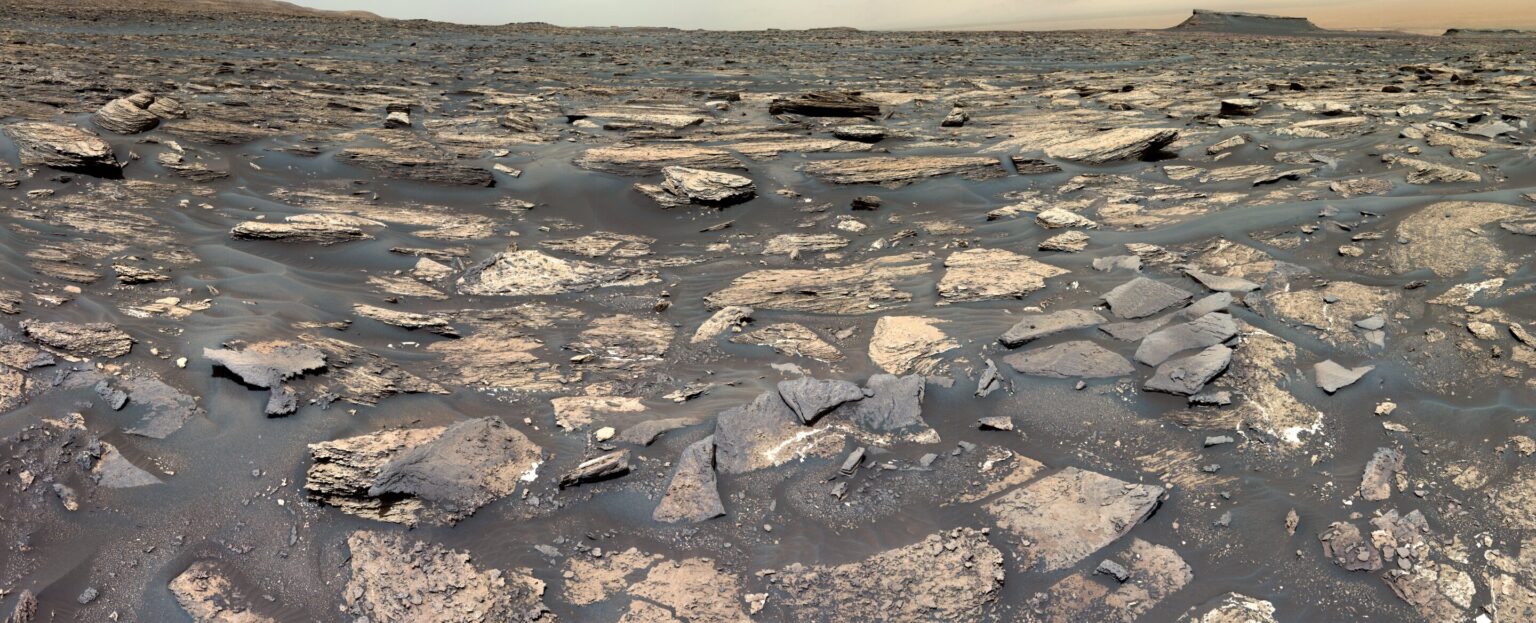Scientists have once again found confirmation that billions of years ago Mars was similar to Earth. This is evidenced by the large amount of manganese oxide found in the Gale Crater by the Curiosity rover. It could only have formed in an oxygen-rich atmosphere.

Manganese oxide in Gale Crater
A group of researchers using the ChemCam instrument on board NASA’s Curiosity rover discovered a larger than usual amount of manganese in lake rocks in the Gale Crater on Mars. This indicates that these deposits were formed in a river, delta, or near the shoreline of an ancient lake in conditions that were quite similar to those on Earth.
“It is difficult for manganese oxide to form on the surface of Mars, so we didn’t expect to find it in such high concentrations in a shoreline deposit,” said Patrick Gasda of the Los Alamos National Laboratory’s Space Sciences and Applications Group and lead author of the study.
On Earth, such deposits occur constantly due to the high oxygen content in the atmosphere. It, in turn, is formed as a result of photosynthesis, as well as due to microorganisms that help catalyze manganese oxidation reactions.
Mystery of the formation of manganese oxide
We have no evidence of life on Mars, and the mechanism of oxygen production in its ancient atmosphere is unclear, so how manganese oxide formed and concentrated here is really puzzling. These findings indicate that some large-scale processes occurred in its gas and water shells. However, it requires additional research to understand what it was.
ChemCam, developed at Los Alamos and CNES (the French Space Agency), uses a laser to form plasma on the surface of rocks and collects reflected radiation to quantify the elemental composition of rocks.
The sedimentary rocks explored by the rover are a mixture of sands and silts. Sandy rocks are simpler, and groundwater penetrates them more easily than through the silts that make up most of the rocks of the lake floor in Gale Crater.
The research team considered how manganese could have been enriched in such soil, for example, by seeping groundwater through the sands on the shore of a lake or the mouth of a delta, and which oxidizer could be responsible for the deposition of manganese in rocks.
Evidence of similarity to the Earth
On Earth, manganese is enriched by oxygen in the atmosphere, and this process is often accelerated by the presence of microorganisms. Microbes on Earth can use various degrees of manganese oxidation as energy for metabolism. If there had been life on ancient Mars, then the increased manganese content in these rocks on the lake shore would have been a useful source of energy for it.
The environment of Lake Gale, as evidenced by these ancient rocks, opens a window to a habitable world that looks remarkably similar to some places that exist on modern Earth. Manganese minerals are common in shallow acidic waters located on the shores of lakes on our planet, and it is very strange to find such recognizable features on ancient Mars.
According to phys.org
Follow us on Twitter to get the most interesting space news in time
https://twitter.com/ust_magazine


